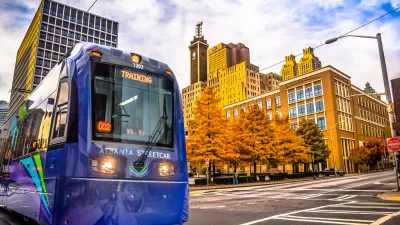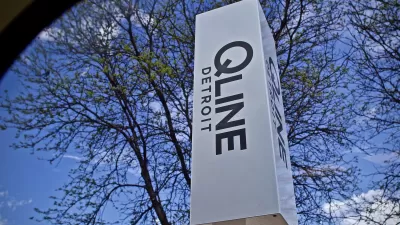"Opposing streetcars and light rail today would be like opposing the building of freeways, the Beltway and Metrorail in the 20th century," writes Chris Leinberger in an op-ed for the Washington Post.
Leinberger argues that streetcars are the next step in the evolution of the Washington D.C. metropolitan area that began with Metrorail in the 1970s.
Showing remarkable foresight, the civic leaders of this region invested in the first new heavy-rail system the country had seen in decades. Starting in the late 1970s, Metrorail radiated from downtown D.C. in a manner similar to the freeways. Today, more than 80 percent of new employment growth occurs within walking distance of a Metrorail station, providing employers and residents an environmentally sustainable way of living and creating wealth for their families and the region.
Streetcars in Arlington County and the District as well as Maryland’s proposed Purple Line light rail are the next steps in this evolution.
Leinberger also makes the argument in support of the much costlier investment in streetcars as compared to buses.
Streetcars have shown that the corridors they traverse redevelop rapidly, which did not happen with buses. Why? Streetcar lines are permanent, signaling to the private market that the transportation system is not going to change tomorrow. Also, middle-class Americans like streetcars. Consumers who have a choice ride streetcars and other rail transit but generally not buses.
I have seen billions in privately funded economic development around streetcar, light rail and Metrorail stations. I have yet to see much private investment at bus stops.
FULL STORY: Riding light rail and streetcars into better communities

Alabama: Trump Terminates Settlements for Black Communities Harmed By Raw Sewage
Trump deemed the landmark civil rights agreement “illegal DEI and environmental justice policy.”

Planetizen Federal Action Tracker
A weekly monitor of how Trump’s orders and actions are impacting planners and planning in America.

The 120 Year Old Tiny Home Villages That Sheltered San Francisco’s Earthquake Refugees
More than a century ago, San Francisco mobilized to house thousands of residents displaced by the 1906 earthquake. Could their strategy offer a model for the present?

Ken Jennings Launches Transit Web Series
The Jeopardy champ wants you to ride public transit.

BLM To Rescind Public Lands Rule
The change will downgrade conservation, once again putting federal land at risk for mining and other extractive uses.

Indy Neighborhood Group Builds Temporary Multi-Use Path
Community members, aided in part by funding from the city, repurposed a vehicle lane to create a protected bike and pedestrian path for the summer season.
Urban Design for Planners 1: Software Tools
This six-course series explores essential urban design concepts using open source software and equips planners with the tools they need to participate fully in the urban design process.
Planning for Universal Design
Learn the tools for implementing Universal Design in planning regulations.
Clanton & Associates, Inc.
Jessamine County Fiscal Court
Institute for Housing and Urban Development Studies (IHS)
City of Grandview
Harvard GSD Executive Education
Toledo-Lucas County Plan Commissions
Salt Lake City
NYU Wagner Graduate School of Public Service




























